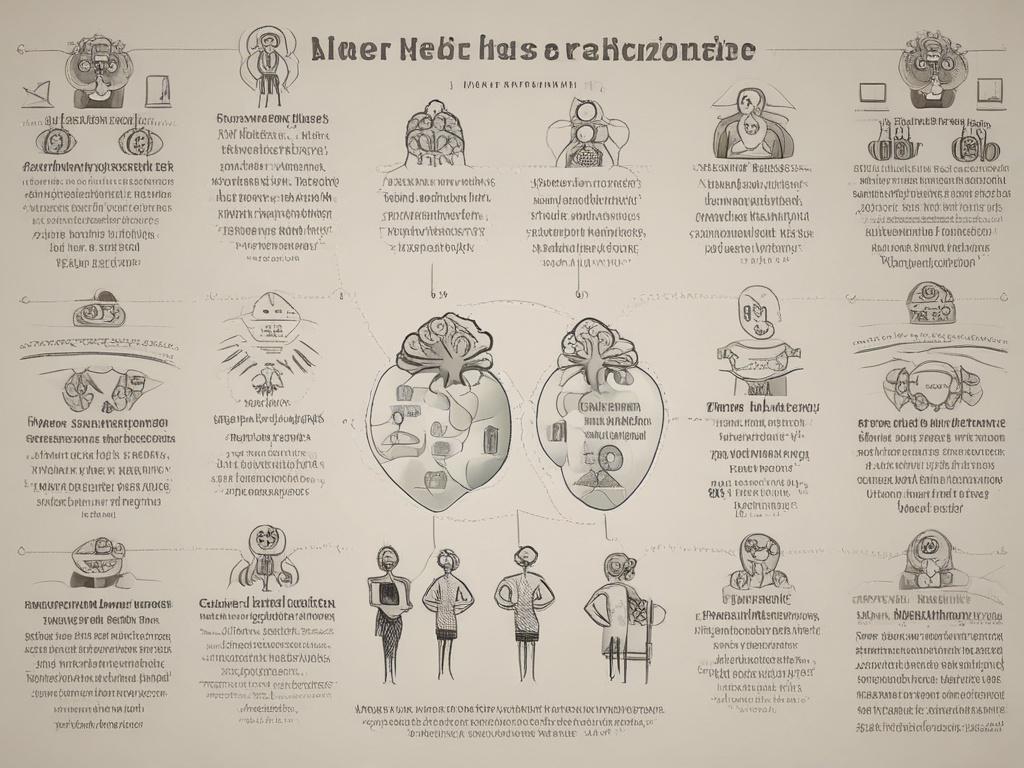
Compulsive sexual behavior is a complex issue that affects individuals and their loved ones in profound ways. Often misunderstood, this behavior can lead to serious emotional distress, relationship turmoil, and long-term mental health challenges. By delving into the intricacies of compulsive sexual behavior, we aim to explore both its underlying causes and the wide-ranging effects it can have on everyday life. Through this understanding, we can better equip ourselves to address the challenges it presents.
In this blog post, we will explore the complexities of compulsive sexual behavior and its impact on relationships and mental health. We will also discuss effective strategies for managing this condition, enabling individuals to foster healthier habits and improve their overall well-being. Whether you are seeking to understand yourself or support a loved one, gaining insight into compulsive sexual behavior is crucial for promoting healing and change.
Exploring the complexities of compulsive sexual behavior and its underlying causes
Compulsive sexual behavior (CSB) is a multifaceted issue that often stems from a combination of psychological, biological, and sociocultural factors. Individuals who experience CSB may feel driven to engage in sexual activities despite negative consequences, such as relationship issues, emotional distress, or health risks. Understanding these underlying causes involves examining a person’s history, including trauma, mental health disorders, and early sexual experiences. The role of neurobiology, particularly how the brain’s reward system responds to sexual stimuli, also plays a significant part in reinforcing these compulsive behaviors.
Moreover, societal norms and peer influences can exacerbate compulsive sexual behavior. In an age where sexual content is easily accessible through various media, individuals may find themselves grappling with unrealistic expectations and pressures. This environment can lead to distorted perceptions of sexual relationships and a craving for instant gratification. By exploring these complexities, we can better understand the interplay between individual experiences and broader societal influences, ultimately recognizing that compulsive sexual behavior is not merely a personal failing but a challenge that many navigate in a complex world.
The profound impact of compulsive sexual behavior on relationships and mental health
Compulsive sexual behavior can significantly strain relationships, leading to feelings of betrayal, resentment, and mistrust among partners. Individuals affected by this behavior often struggle to maintain emotional and physical intimacy, which creates a rift in the relationship. Their preoccupation with sexual thoughts or activities can divert attention away from their partner's needs, fostering feelings of neglect or inadequacy. This cycle of emotional withdrawal and compulsivity can result in a toxic environment, where one or both partners may feel isolated and misunderstood. The ripple effect can extend to family and social circles, as loved ones may feel the tension or disconnection stemming from these behaviors.
Moreover, the mental health implications of compulsive sexual behavior can be profound. Many individuals experience feelings of guilt, shame, or anxiety, which can exacerbate existing mental health conditions or lead to new ones, such as depression. The struggle to control these urges often leads to a sense of helplessness, diminishing one’s self-esteem and overall quality of life. In extreme cases, individuals may turn to unhealthy coping mechanisms, such as substance abuse, to escape their emotional turmoil. Recognizing these challenges is vital, as it paves the way for appropriate interventions and support systems aimed at restoring balance in both mental health and interpersonal relationships.
Strategies for managing compulsive sexual behavior and fostering healthier habits
Managing compulsive sexual behavior requires a multifaceted approach that addresses both the psychological and behavioral aspects of the issue.
The Carnes 30-Task Model, developed by Dr. Patrick Carnes, is a foundational and empirically supported framework for the treatment of compulsive sexual behavior (CSB) and sexual addiction. Designed to parallel the developmental stages of recovery, the 30 tasks guide patients through a progressive therapeutic process that fosters stabilization, insight development, behavioral change, and relational healing. The model integrates psychoeducation, trauma resolution, accountability structures, and spiritual/values-based inquiry, which together address the multidimensional nature of sexual compulsivity.
One of the key strengths of the 30-Task Model lies in its holistic and sequential approach, helping individuals develop internal structure and external support systems. Early tasks focus on breaking through denial, establishing sobriety, and building a recovery support network, including the use of 12-step groups and sponsor relationships. Mid-stage tasks deepen therapeutic engagement by guiding patients through trauma processing, family-of-origin exploration, and cognitive reframing of shame-based beliefs. Later tasks emphasize relationship repair, reintegration of healthy sexuality, and the development of a meaningful personal vision for recovery.
Research and clinical experience suggest that patients who engage with the 30 tasks under the guidance of a Certified Sex Addiction Therapist (CSAT) report improved emotional regulation, increased abstinence duration, reduction in acting-out behaviors, and enhanced relational functioning. The model’s structure offers a reliable roadmap for clinicians and patients alike, ensuring that progress is measurable and rooted in both accountability and compassion. Its adaptability across diverse clinical presentations—such as co-occurring substance use, betrayal trauma, and intimacy disorders—further supports its utility in comprehensive treatment planning.
In sum, the Carnes 30-Task Model offers an evidence-informed, structured, and trauma-responsive method for treating compulsive sexual behavior. Its success in clinical settings is supported by decades of application and by its integration of both psychodynamic and behavioral principles. As such, it remains one of the most respected and utilized models in the field of sexual addiction recovery.